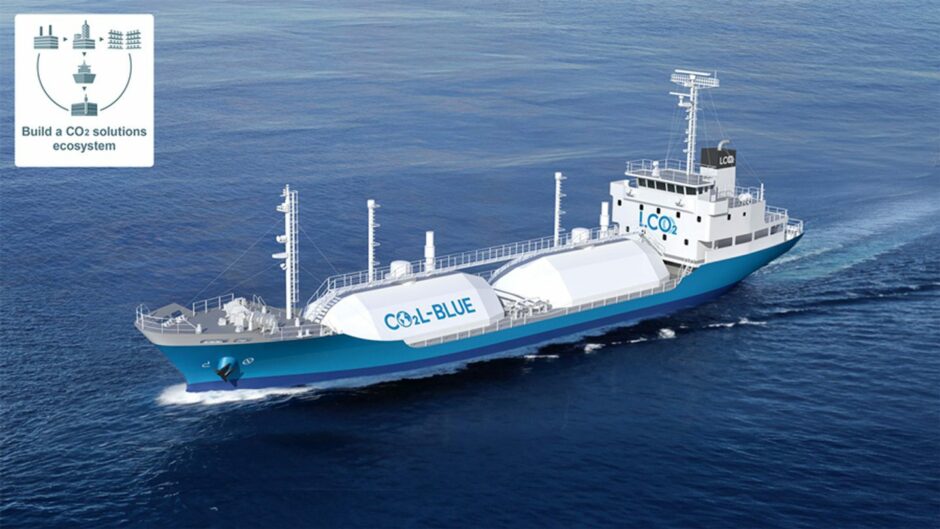
A major Japanese ship-builder is getting ready for a new type of seaborne cargo: trapped CO₂.
Capturing and storing carbon dioxide has an important role to play in meeting net-zero targets. But doing that can be difficult if the source of the greenhouse gas, such as a power plant, isn’t near a CO₂ storage facility. That’s where ships come in.
Japanese firm Mitsubishi Shipbuilding Co. part of the MHI Group, is working on a prototype designed to haul large quantities of CO₂ over long distances. The firm expects such vessels will be needed and used at scale in years to come, as the market for capturing, storing and using carbon develops. While liquid CO₂ hauling ships have already been used by the food industry, the company expects its vessel will be the first to specifically service the nascent carbon capture, utilization and storage (CCUS) sector.
The idea requires capturing CO2, liquefying it and then transporting it in storage units onboard ships.
The carriers will become increasingly necessary as it will be impossible to totally eliminate carbon dioxide emissions, according to Takeshi Maetoko, senior deputy manager, planning and administration department, at Mitsubishi Shipbuilding. “Even if renewable energy and hydrogen and ammonia, which do not emit CO₂, become widespread in the future, fossil fuel and CO₂ emissions cannot be reduced to zero, and we believe that a CCUS value chain will also exist,” he said in an emailed statement.
Due for delivery before the end of March next year, the demo ship will be 72 meters (236 feet) long with a tank capacity of 1,450 cubic meters.
The shipbuilder isn’t the only one with plans to tap the CCUS market, and there’s growing interest in the idea from greenhouse gas polluters on the land and sea.
Northern Lights JV, a partnership owned by Shell, TotalEnergies and Equinor to transport and permanently store CO₂ under the North Sea, has ordered two carriers to haul liquefied carbon dioxide. The ships will be built by Dalian Shipbuilding Industry Co. and will be ready for delivery by mid-2024.
Elsewhere, industrial gas supplier Air Liquide SA and shipping company Sogestran SA, both based in France, are teaming up to transport liquid CO₂ using ships and barges.
The International Energy Agency’s net-zero emissions by mid-century roadmap sees 1.6 gigatons of CO₂ captured annually by 2030. That rises to 7.6 gigatons in 2050, of which about 95% is to be held in permanent geological storage.
Pipelines can also be used to transfer CO₂ from emitters to storage facilities. Yet it will be cheaper to transport the greenhouse gas by ship rather than pipeline when distances exceed 300 kilometers, according to Mitsubishi Shipbuilding, which referenced a presentation from the Research Institute of Innovative Technology for the Earth.
As well as transporting liquid CO₂ from land-based polluters, Mitsubishi Shipbuilding is also involved in developing a system to remove carbon dioxide from ships’ exhaust gases, which is then liquified and stored onboard.
The shipping industry is a major producer of CO₂, spewing more into the atmosphere than Germany and the Netherlands combined.
Recommended for you
